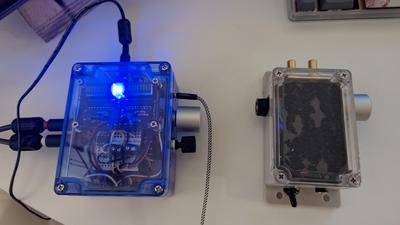Headphone amp mk II
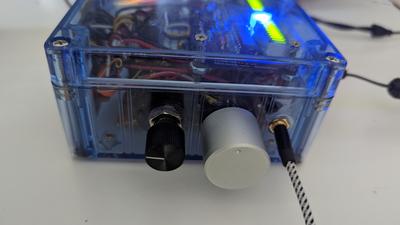
This is the second headphone amplifier that I made. It took me about a month to make this, not including the time it took to wait for the PCBs. This is an improvement on my first amp. It includes a power supply with a linear regulator using the LM317, which reduces the amount of ripple on the power supply input, the TLE2426 which does the "rail splitting" portion of the power supply (i.e. it does the same thing as my original voltage divider, just more accurately), and a BUF634 current buffer, which increases the amount of available current to the amp circuit, since the TLE2426 only has the ability to source about 20 mA of current, which is not enough for a headphone amp.
Aside from the power supply improvements, I also added a "volume unit" (VU) meter and a crossfeed circuit, both of which were based on board designs I found online.
The purpose of the VU meter is simply for fun, since I think it looks cool, and I can see when audio is coming out. The crossfeed circuit is useful because it mixes a bit of the left and right channels (at fairly low frequencies), which reduces the hard stereo separation that bothers me while listening using headphones. It has three settings basically, low, medium, and high.
However I did have to modify the VU meter slightly since the design of the board I got was insufficient for my needs. Basically, due to the fact that it uses a diode in order to detect peaks in the audio signal, which has a significant voltage drop of 600 mV, it means that the VU meter is heavily attenuated. So in order to fix that I use another op-amp, the LM386 which does the job of boosting the audio signal to the VU meter by 600 mV. This is called a precision rectifier circuit.
Below is a picture of the VU meter and crossfeed boards. I used a rotary switch for the crossfeed circuit, following the advice here, which avoids having multiple toggle switches. I had the boards printed from OSH Park which I would highly recommend, since they have free shipping, and they are located in the US. They even gave me a free upgrade on the speed, since there was extra room on one of their runs.
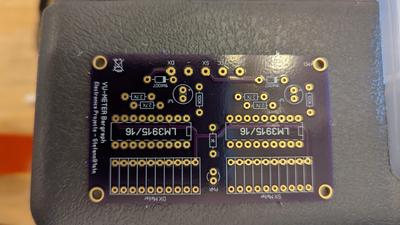
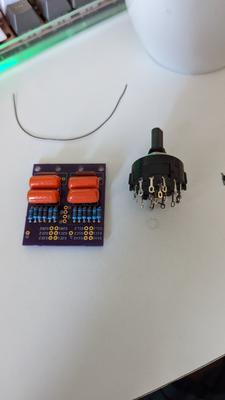
And here is the main amp board, partially assembled.
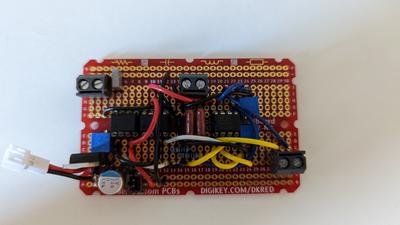
And the final amp, side by side with my first amp.
